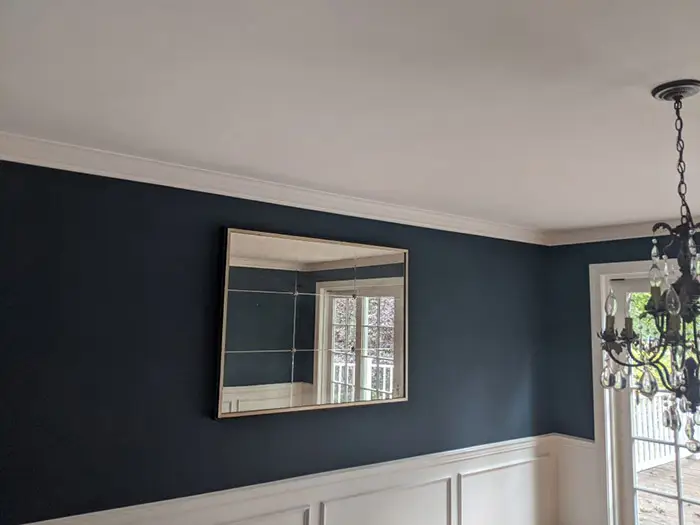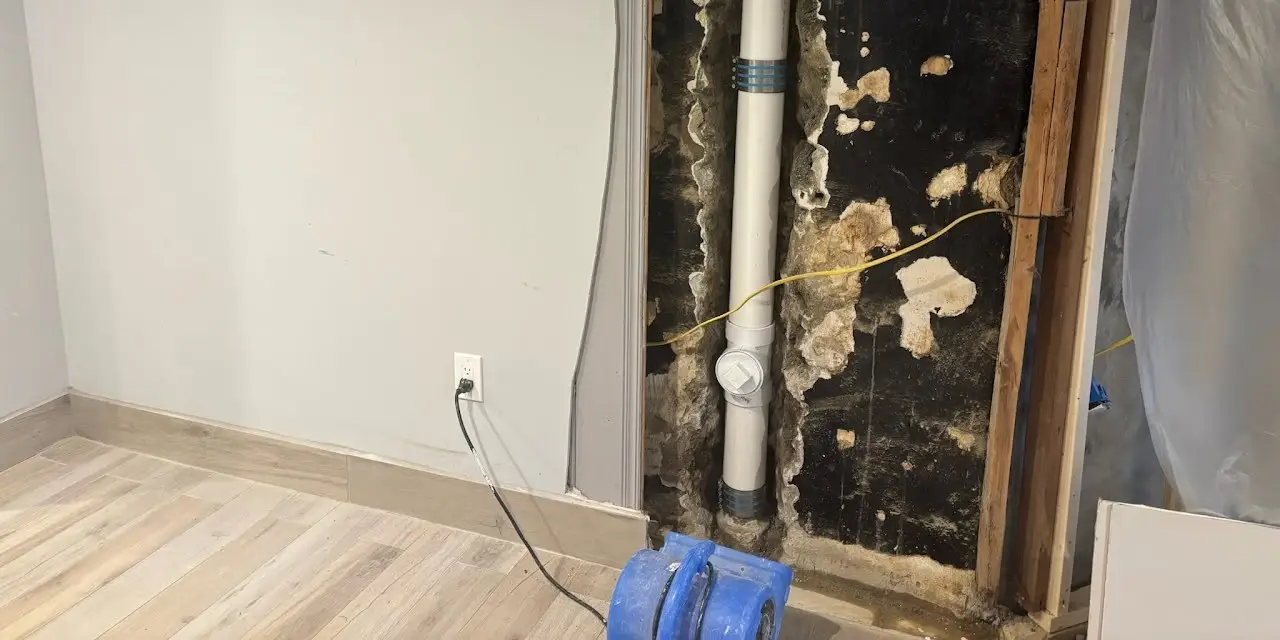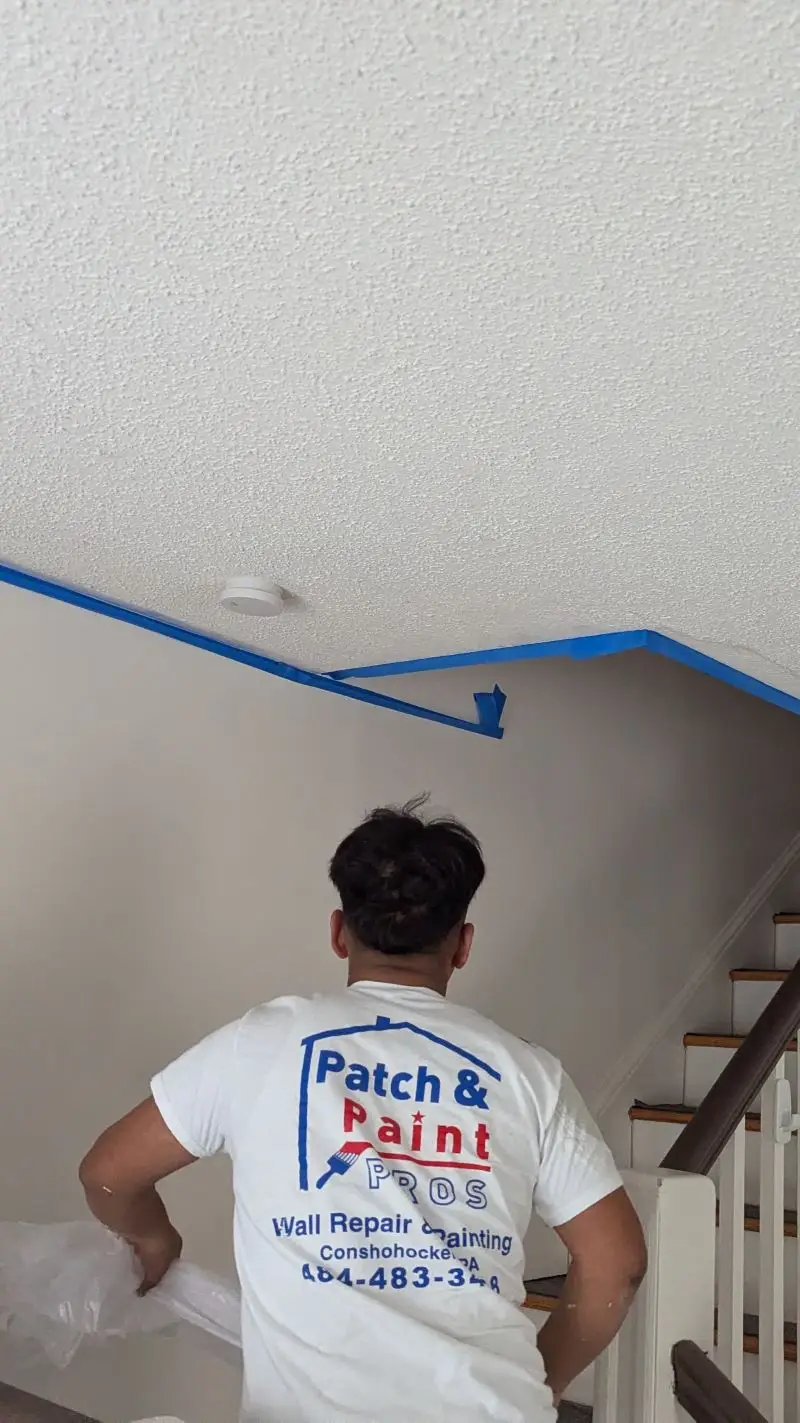As a licensed drywall repair contractor serving Conshohocken, PA and surrounding counties, we often get calls from homeowners dealing with ceiling holes after water damage or accidents. Here’s what to do—and when to call a professional.
No one wants to find a hole in their ceiling, but it can happen for various reasons. It’s important to deal with the issue promptly and properly; otherwise, you could be facing more serious damage down the line.
In this article, we’ll discuss how to handle a hole in your ceiling and what steps you need to take. We’ll also provide tips on preventing future holes from forming. Read on to learn all about dealing with a hole in your ceiling!
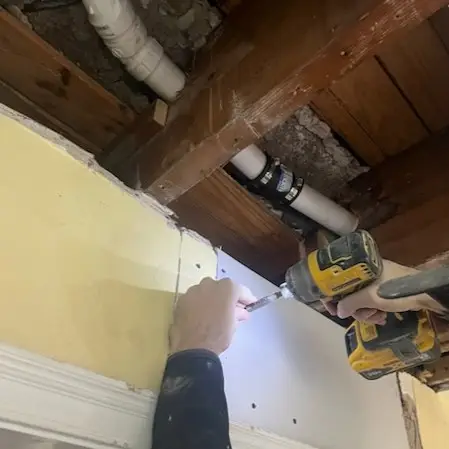
Need Ceiling Drywall Repaired Fast?
Patch and Paint Pros offers expert ceiling repair services in Conshohocken and the surrounding Montgomery County area. Whether it’s from water damage or impact, we’ll make it look like it never happened.
📞 Call Now or 📩 Request a Free Estimate
Assessing The Damage
If you suspect a roof leak, start by checking the attic for signs of water damage or mold growth. Or if damage is on lower levels of the house, there may be a plumbing issue. Learn more about who to call for water damage repairs.
If there are no signs of leaks, the problem may be due to a drywall screw that has popped out or larger holes in the ceiling caused by something hitting the ceiling.
Once you have determined the source of the problem, it’s time to start fixing the damage. If it’s a small hole, you may be able to patch it with some spackle or joint compound. For larger holes, you’ll need to cut out the damaged area and replace it with a new piece of drywall. Be sure to attach the new piece to the ceiling joists for stability.
Ceiling damage can be frustrating, but with the right tools and techniques, you can repair it quickly and easily. Just remember to take your time and always prioritize safety when working on a ladder or lift.
Locating The Source
Repairing a hole in the ceiling can seem daunting, but with the right approach, it’s a manageable DIY project. The first step is to assess the type of ceiling material you’re dealing with, as this will dictate the repair method.
For drywall ceilings, you can start by cutting out the damaged area with a drywall saw or utility knife, being sure to cut out a clean square or rectangle shape. Then, measure and cut a new piece of drywall to fit the hole, securing it to the ceiling joists with drywall screws.
For plaster ceilings, larger holes may require a bit more effort. You’ll need to remove any loose plaster around the hole, then apply a layer of mesh tape before covering it with a joint compound. Once the compound has dried, sand it down to create a smooth surface and finish with a layer of paint to match the surrounding ceiling color.
Regardless of the ceiling material, it’s important to address any underlying issues that may have caused the hole, such as a leaky roof or damaged electrical wiring. Taking these extra steps will ensure that your ceiling repair is a long-lasting solution. If you need help on your drywall or plaster repair project, reach out to Patch and Paint Pros in Conshohocken, PA.
Repairing The Hole
The ceiling had a gaping hole, the kind that made you fear for your safety. The problem must be addressed – but how? The repair process seemed daunting and it was intimidating to even start. But something had to be done, so I decided to take on this challenge head-on.
I got to work gathering my supplies: drywall, screws, joint compound, sandpaper…and more. After carefully studying the instructions and making sure I knew exactly what I needed to do, I began fixing the hole in earnest.
It took time and patience – especially when getting the right levels of pressure while screwing into place – yet eventually, I succeeded in restoring the integrity of the roof. Now all that was left was determining if further preventative measures were necessary.
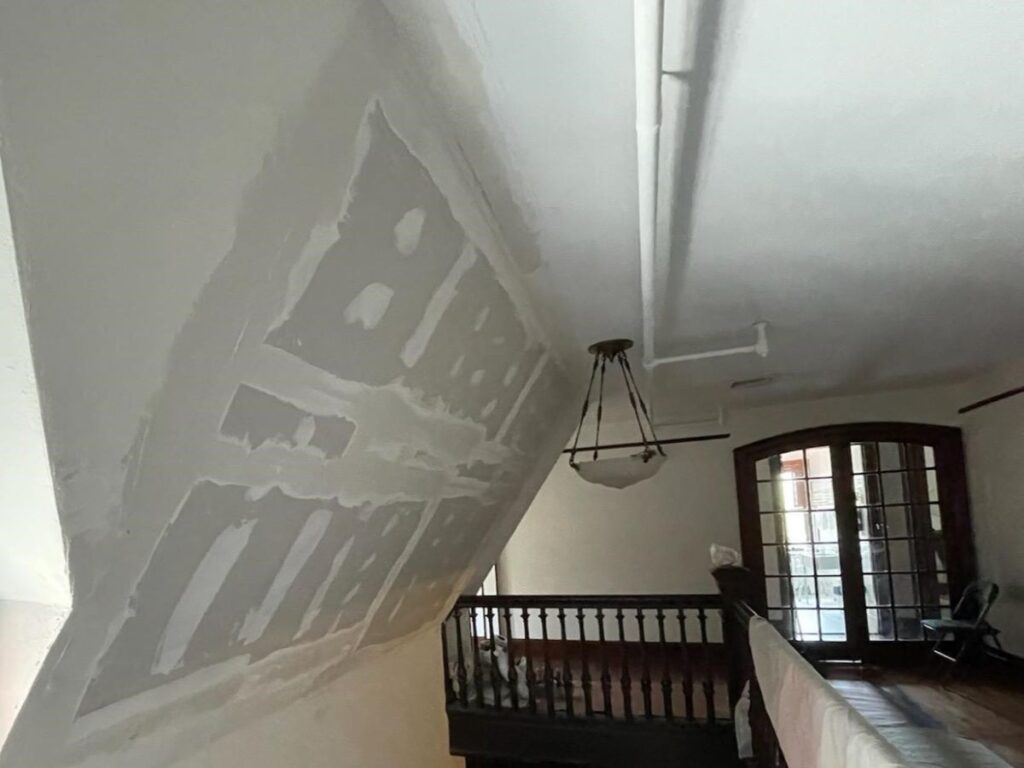
Making Preventative Improvements
Once you have identified the hole in your ceiling, it’s important to make preventative improvements. You should check for any other potential weaknesses or signs of damage that could be causing or contributing to the hole. For example, if there is water damage, look around and see if there are any stains or discoloration on the walls and nearby woodwork.
Additionally, inspect adjacent electrical wiring and plumbing fixtures that may be associated with the area. If possible, take steps to reduce moisture levels in the affected space by using fans or dehumidifiers. This will help ensure a dry environment so your repairs last longer and minimize further damage from occurring.
Improving ventilation can also help reduce humidity levels which might otherwise cause condensation buildup inside walls and ceilings.
In addition, properly sealing cracks between wall panels and windowsill areas can also protect against future issues like mold growth. After taking these measures, you’ll be ready to move on to consulting a professional about repairing the damaged ceiling.
Consulting A Professional
To protect your home from further damage and to ensure the problem is fixed correctly, it’s important to consult a professional ceiling repair company like Patch and Paint Pros in Conshohocken. Making preventative improvements can help keep the issue at bay until you’re able to hire an expert.
When dealing with a hole in the ceiling, there are several steps you should take:
- Inspecting the area: Carefully inspect both sides of the hole for any other signs of deterioration or wear. Look around nearby areas as well, such as walls and ceilings, to see if there are any additional issues that need addressing.
- Take pictures: Document what you find by taking photos of each side of the opening so that you have something tangible to provide when consulting with a repair specialist.
- Note measurements: Measure both sides of the opening using a tape measure and make careful notes about those measurements before contacting someone for further assistance.
It’s also beneficial to contact multiple contractors for quotes on repairs, ensuring that all bids include materials used and labor costs associated with fixing your particular situation. This will give you a better idea of how much it might cost to fix the problem properly, giving you more control over your budget.
Furthermore, when it comes to ceiling repair, it’s essential to have the right tools and equipment. From patching materials to sanders and paint sprayers, having the proper tools can make a significant difference in the quality of the final result. It’s also a good idea to follow some ceiling repair tips, such as assessing the damage carefully, using the correct repair materials, and ensuring that the surface is smooth before painting. And of course, it’s crucial to work with certified professionals who have the necessary expertise and experience to handle the job efficiently and safely.
Need Ceiling Drywall Repaired Fast?
Patch and Paint Pros offers expert ceiling drywall repair in Conshohocken and the surrounding Montgomery County area. Whether it’s from water damage or impact, we’ll make it look like it never happened.
📞 Call Now or 📩 Request a Free Estimate
Final Thoughts
The repair process for a hole in the ceiling can be daunting, but it is important to follow each step. By assessing the damage, locating the source, and repairing the hole, you’ll be able to return your ceiling to its former state.
And if needed, consulting with a professional ensures that everything is done correctly. What’s even more interesting is that according to recent statistics, up to 50% of homes have some kind of water-related damage due to leaks or flooding.
This shows just how important it is for homeowners to take steps towards preventing such issues from occurring and taking action when they do arise. With proper attention and effort on our part, we can make sure our ceilings are safe and sound.

